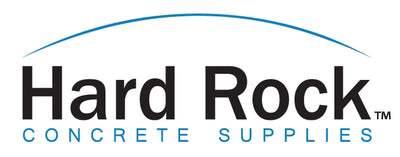Sku: 11820
Barcode:
Availability: In stock (8 items)
Product type: Concrete Cleaner
Vendor: SureCrete Design Products
$16.99
Sku: **203382
Barcode:
Availability: In stock (15 items)
Product type: Concrete Cleaner
Vendor: Rexall
$112.79
Sku: 855015
Barcode: 616971855015
Availability: In stock (6 items)
Product type: Stamp Release Liquid
Vendor: W.R. Meadows
$48.99
Sku: 080203
Barcode: 618417080203
Availability: In stock (4 items)
Product type: Acid
Vendor: Innovative Manufacturing
$74.99
Sku: 240607
Barcode: 692738240607
Availability: In stock (26 items)
Product type: Release
Vendor: Nox-Crete
$99.00
Sku: 224517
Barcode:
Availability: In stock (16 items)
Product type: Acid
Vendor: Fabrikem
$28.99
Sku: 702099
Barcode: 618417702099
Availability: In stock (9 items)
Product type: Surface Retarder
Vendor: Innovative Manufacturing
$70.99
Sku: 826304
Barcode: 069273826304
Availability: In stock (5 items)
Product type: Concrete Dissolver
Vendor: Nox-Crete
$45.56
Sku: 362681
Barcode: 093994362681
Availability: In stock (1 item)
Product type: Admixture
Vendor: Mapei
$173.99
Sku: 334534
Barcode: 093994334534
Availability: In stock (4 items)
Product type: Admixture
Vendor: Mapei
$28.99
Sku: **070440
Barcode: 618417070440
Availability: In stock (12 items)
Product type: Chemicals & Cleaners
Vendor: Innovative Manufacturing
$71.29
Sku: 935059
Barcode:
Availability: In stock (2 items)
Product type: Chemicals & Cleaners
Vendor: Evertek Canada
$22.49
Sku: **341448
Barcode:
Availability: In stock (5 items)
Product type: Coating Remover
Vendor: Innovative Manufacturing
$85.29
Sku: 935601
Barcode:
Availability: In stock (4 items)
Product type: Chemicals & Cleaners
Vendor: Evertek Canada
$114.99
Sku: 935061
Barcode:
Availability: In stock (5 items)
Product type: Chemicals & Cleaners
Vendor: Evertek Canada
$89.99
Sku: 038766
Barcode: 674173038766
Availability: In stock (7 items)
Product type:
Vendor: Hard Rock Concrete Supplies
$125.99
Sku: **070047
Barcode: 842467070047
Availability: In stock (7 items)
Product type: Solvent
Vendor: TK Products
$66.29
Sku: 360687
Barcode: 093994360687
Availability: In stock (1 item)
Product type: Primer
Vendor: Mapei
$163.99
Sku: 595089
Barcode: 093994595089
Availability: In stock (4 items)
Product type: Primer
Vendor: Mapei
$126.49
Sku: 400209
Barcode: 618714400209
Availability: In stock (11 items)
Product type: Evaporation Retarder
Vendor: Innovative Manufacturing
$85.99
Sku: 400205
Barcode:
Availability: In stock (7 items)
Product type: Evaporation Retarder
Vendor: Innovative Manufacturing
$24.99
Sku: **203375
Barcode:
Availability: In stock (5 items)
Product type: Concrete Cleaner
Vendor: Rexall
$33.29






